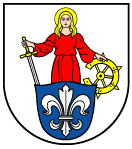Fact sheet – Municipal heat planning funding project
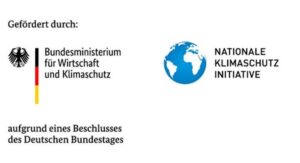
Project title: Preparation of a municipal heat planning for the city of Wolmirstedt
Funding reference: 67K26556
Project period: 01.10.2024 – 31.12.2025
Grant period: 01.05.2024 – 31.12.2025
Service provider: Engineering office ETA-E (Magdeburg)
Funding body: Federal Ministry for Economic Affairs and Climate Protection
Purpose and procedure of heat planning
Municipal heating planning serves as a strategic management tool for the systematic reorganization of the local heating supply. The aim is to develop a sustainable, climate-friendly and resilient infrastructure based on a comprehensive analysis of the status quo and the potential available regionally. The focus is on a comprehensive analysis of the entire municipal area, which enables suitable supply options – such as the expansion of renewable energies, the use of unavoidable waste heat or increases in efficiency – to be allocated spatially and evaluated in a differentiated manner. The heating plan is merely an initial roadmap for the transformation of the municipal heating supply and not a detailed plan. Based on the heating plan, specific district concepts, renovation concepts or, for example, network expansion plans must then be drawn up.
The city of Wolmirstedt is being supported in the planning process by the engineering firm ETA-E(www.eta-e.de) from Magdeburg, which is responsible for drawing up the heating plan. Completion is scheduled for the end of 2025.
Planning objectives
The central goal is to achieve a climate-neutral heat supply by 2045 at the latest. The heating plan is intended to serve as a sound basis for decision-making for citizens, companies and municipal stakeholders, thereby providing targeted support for individual and institutional investments in sustainable heating technologies. Once completed, the draft plan will be made publicly accessible for a period of one month. During this period, all citizens of the municipality have the opportunity to submit comments. The final decision is made by the city council.
Expected added value for the urban community
- Development of a future-proof heating infrastructure with high adaptability to technological and regulatory developments
- Strengthening regional value chains by utilizing local energy potential
- Increasing security of supply and independence from fossil fuel imports
- Contribution to achieving municipal climate targets by reducing greenhouse gas emissions
- Stabilization of heating costs through strategic management of the transformation process
- Improved planning for private, commercial and public stakeholders
Participation and responsibilities
Municipal heat planning relies on the active involvement of various stakeholder groups along the four legally defined process phases (see diagram). In addition to politicians, administrators and the relevant technical departments, energy suppliers, grid operators, businesses, civil society and interested citizens are also informed and – where possible – involved.
Ms. Anja Schmidt coordinates the topic in the city administration.
Legal framework
Two key laws form the basis for the municipal heating transition:
- Building Energy Act (GEG 2024):
The GEG sets energy standards for buildings and obliges owners to use at least 65% renewable energy for new heating systems in future. It thus promotes climate-friendly modernization at building level and creates clear guidelines for construction and renovation. - Heat Planning Act (WPG, since 2024):
The WPG obliges cities such as Wolmirstedt to draw up a municipal heating plan by June 30, 2028 at the latest. The aim is a strategically planned, sustainable heat supply across the board – tailored to local potential and needs.
Together, the two laws enable a systematic conversion of the heating supply: locally planned, technically concrete, socially balanced and effective in terms of climate policy.
Funding and project duration
The planning is 90% funded by the federal government. Following the positive funding decision, the ETA-E office was commissioned to carry out the analysis and develop the concept, supported by Bio-Wärme-Innovation GmbH, another engineering firm from Magdeburg. The project is scheduled to run from October 2024 to December 2025, with the option to extend.
Planning process and current status
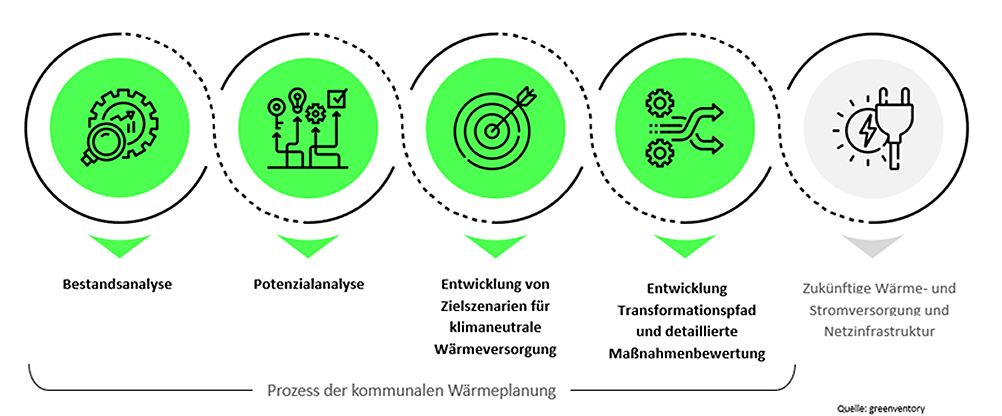
1. inventory analysis
The first step is to comprehensively analyze the existing heat supply. This includes collecting and evaluating consumption data, identifying relevant energy sources and assessing the existing infrastructure. This analysis forms the basis for all further planning steps.
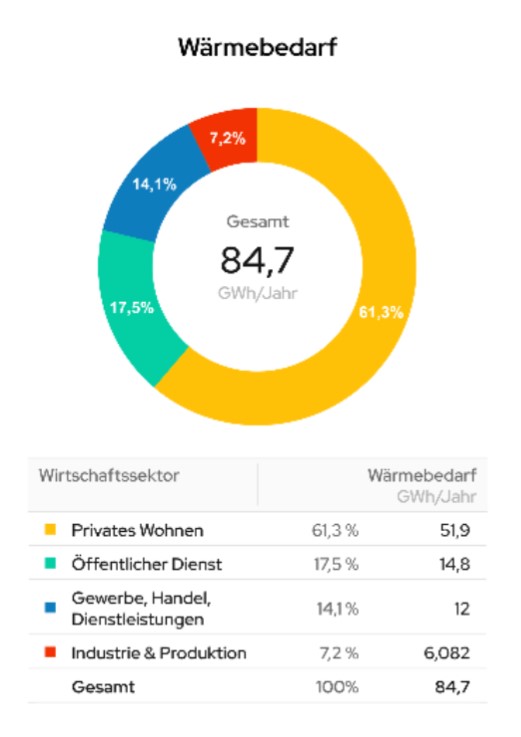
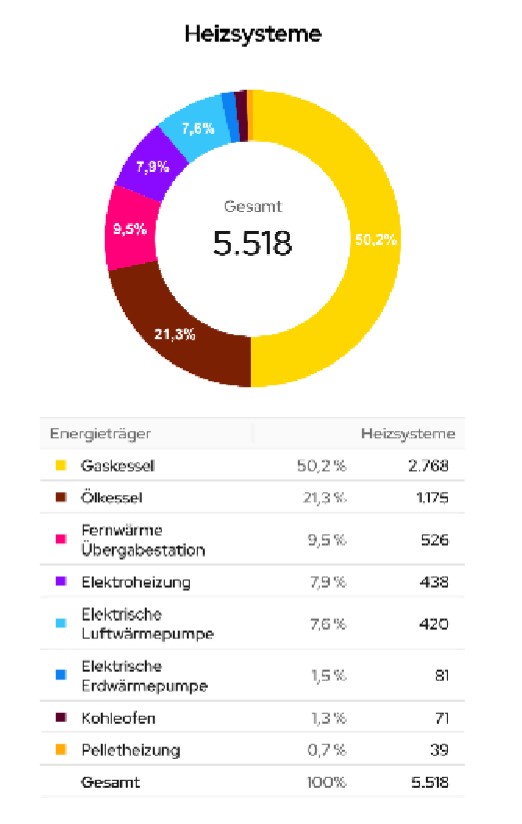
Key findings:
- The annual heat requirement is around 86.5 GWh, of which around 60 % is accounted for by the residential building sector.
- 72 % of the buildings are currently still heated with fossil fuels, 9.5 % via a district heating network (mostly natural gas-based).
- The share of renewable energies in the heat supply is only around 10 %.
2. potential analysis
This phase is dedicated to the identification and evaluation of technical, economic and spatial potential for the generation and use of renewable heat. Among other things, solar thermal energy, geothermal energy, biomass, heat pump solutions and industrial or commercial waste heat are taken into account.
Initial findings:
– Natural gas is currently the dominant energy source.
– There is significant efficiency potential in the building stock built between 1949-1978 and 1979-1990.
– The city has considerable potential for the use of renewable energies.
– Current or planned projects in the energy sector – both public and private – must be included in the planning at an early stage.
3. development of target scenarios
Based on the results of the previous analyses, various scenarios for the future heat supply are developed. These enable a comparative assessment of possible development paths and create the basis for strategic decisions.
4. implementation strategy and updating
The final step involves deriving specific measures to implement the selected target paths. These are then regularly reviewed, evaluated and, if necessary, adapted in order to ensure the effectiveness and target conformity of the municipal heating transition in the long term
Participation formats and dates (outlook)
The involvement of the urban community takes place via several participation formats that are coordinated in terms of content and timing with the respective planning phases.
– Kick-off event (already held)
– Interim presentation to the City Council – Milestone 1 (already held)
– Workshop 1 – Participation of key stakeholders (already held)
– Workshop 2 – In-depth technical discussion (date to follow)
– Citizens’ dialog – Public participation (date in preparation)
